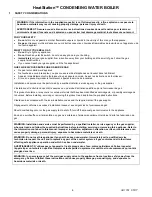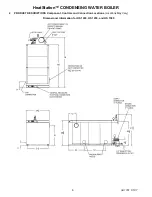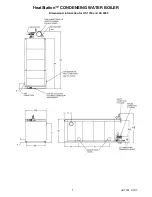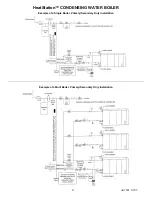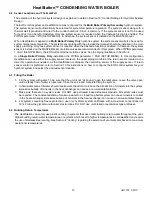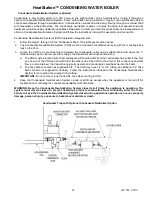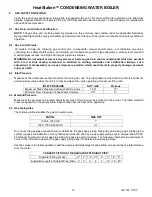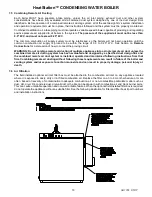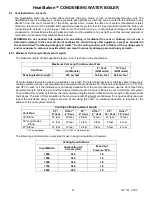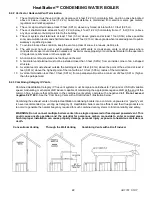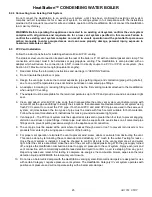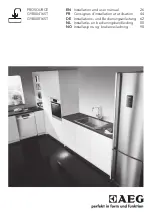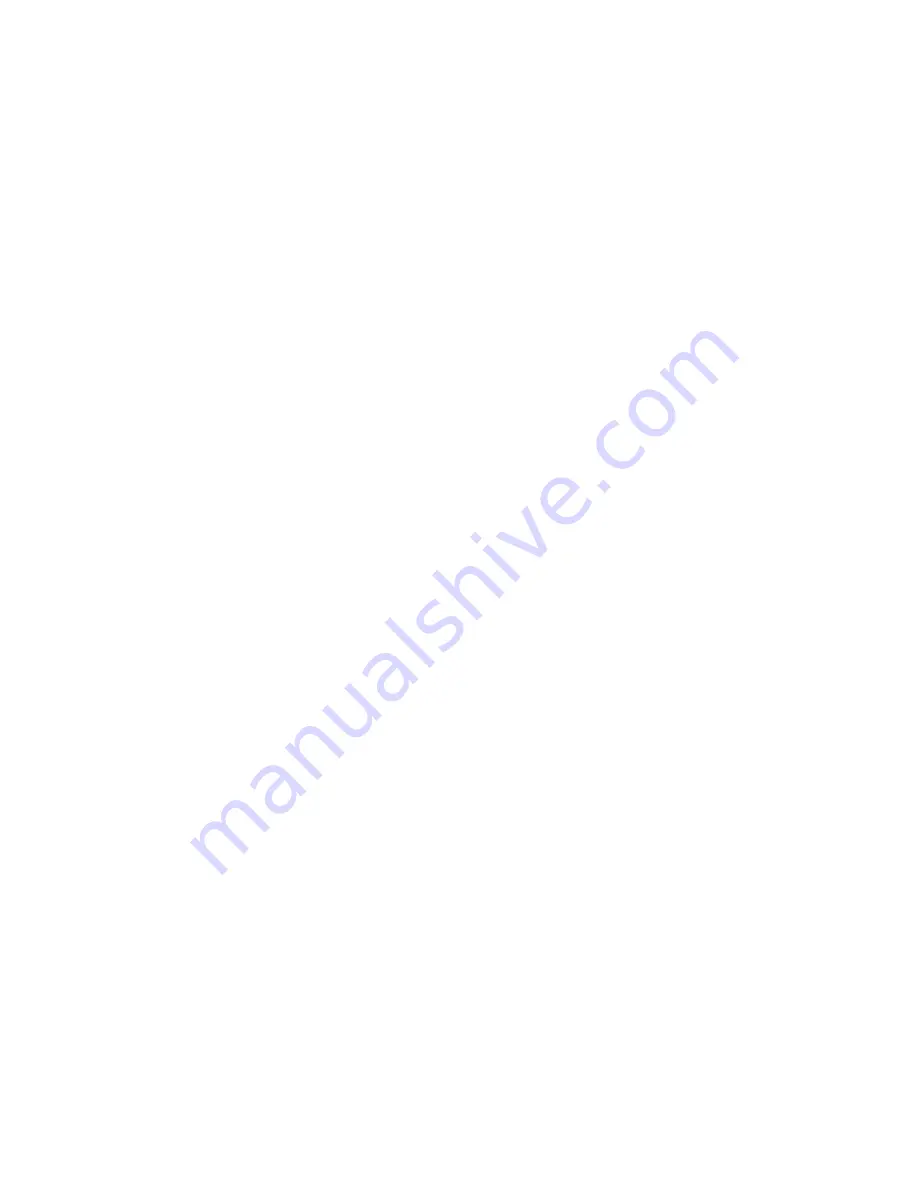
HeatStation™ CONDENSING WATER BOILER
8
34-1161 05/17
3
BOILER INSTALLATION
3.1 Checking Equipment Before You Install
Inspect the unit completely upon receipt from the freight carrier before signing the bill of lading. Inspect the appliance
and all accompanying parts for signs of impact or mishandling. Verify the total number of pieces shown on packing
slips with those actually received. Contact the freight carrier immediately if any damage or shortage is detected.
Check the data decal on the appliance. Be sure the electrical, water and gas supply is adequate for the installation.
Carefully remove all side and top shipping supports and bracing. If possible, do not remove the wooden base/skid
assembly until the product has been moved to its final location for installation and operation (see: Handling and
Locating the boiler).
3.2 Codes
The equipment must be installed in accordance with those installation regulations in force in the local area where the
installation is to be made. Authorities having jurisdiction must be consulted before installation is made. In the absence
of such requirements, the installation must be in accordance with the instructions in this manual, appliance markings
and supplemental instructions and in compliance with the latest edition of the National Fuel Gas Code, ANSI
Z223.1/NFPA 54. Where required by the Canadian authority having jurisdiction, the equipment must be installed in
accordance with the latest edition of the CAN/CSA B149.1-10 Natural Gas and Propane Installation Code and
applicable Provincial Regulations. All appliances conform to the current edition of the ASME Boiler and Pressure
Vessel Code, Section IV, Part HLW.
3.3 Electrical Requirements
See appliance rating decal for electrical service requirements. The appliance must be electrically supplied and
grounded in accordance with the requirements of the authority having jurisdiction or, in the absence of such
requirements, with the latest edition of the National Electrical Code ANSI/NFPA No. 70. In Canada, the electrical
service must conform to local electrical codes and/or CSA C22.1, Canadian Electrical Code, Part 1.
All wiring between the unit and field installed devices must be made with stranded copper wire.
Line voltage wire exterior to the appliance must be enclosed in approved conduit or approved metal clad cable.
To avoid serious damage,
DO NOT
energize the unit until the system and appliance is full of water.
Utiliser du fil de cuivre de la taille appropriée pour le service électrique entrant. Les dommages résultant de l'utilisation
de fil d'aluminium seront exclus du champ d'application de la garantie de cet appareil.
3.4 Handling and Locating the Boiler
WARNING: Use industry standard safe rigging methods, such as strapping around the boiler base/skid
assembly and using spreader bars,
when attempting to lift or move this product. Failure to follow industry
standard safe rigging methods can result in property damage, serious injury or death.
1. The boiler must be located indoors.
2. This boiler can be installed directly on a combustible floor.
3. The boiler must not be installed on carpeting.
4. Locate the boiler in an area that is not exposed to freezing temperatures.
5. The boiler should be installed on a level 4
"
housekeeping pad for proper drainage of condensate.
6. Locate the boiler near a floor drain. Locate the unit so if the heat exchanger or water connections should leak,
water damage will not occur to the adjacent area or to lower floors of the building. When such locations are
unavoidable, install an adequately drained metal drain pan underneath the boiler.
The manufacturer’s warranty
does not cover water damage.
7. Protect associated electrical components and electrical connections from water (dripping, spraying, rain, etc.)
during appliance operation and service.
8. Locate the boiler where the vent and air intake piping, when installed, will remain within the maximum equivalent
lengths allowed. See Venting section for details.
3.5 Clearances To Combustible Surfaces
The minimum clearance to combustible material is 0
"
from the front and zero clearance (0
"
) from the top, sides and




